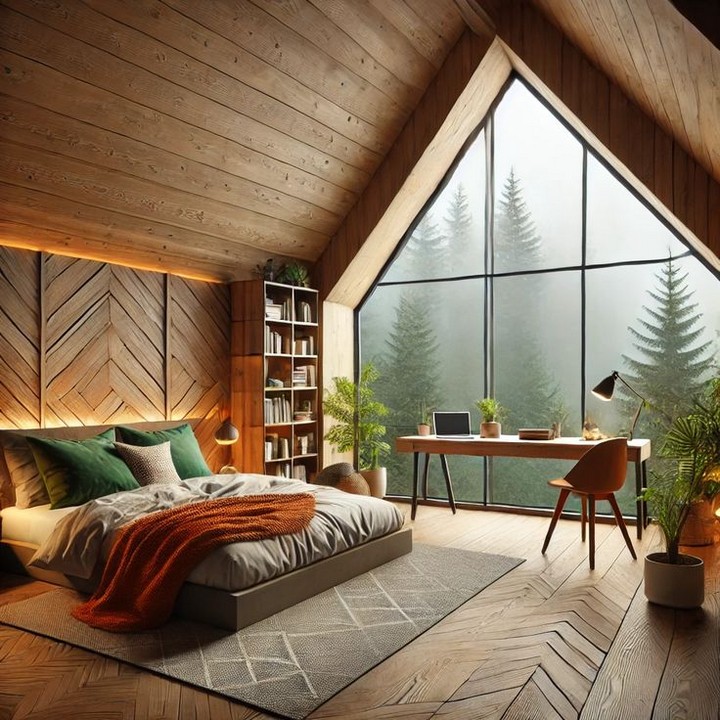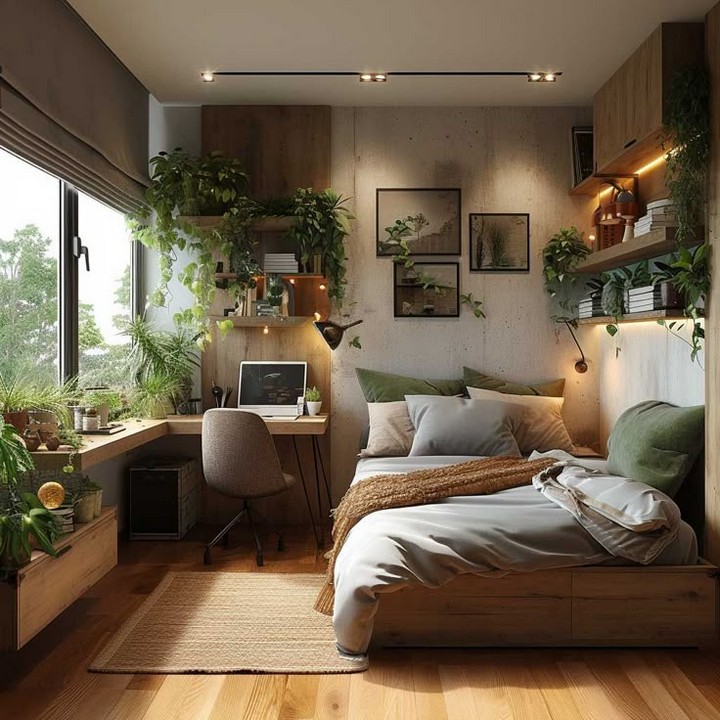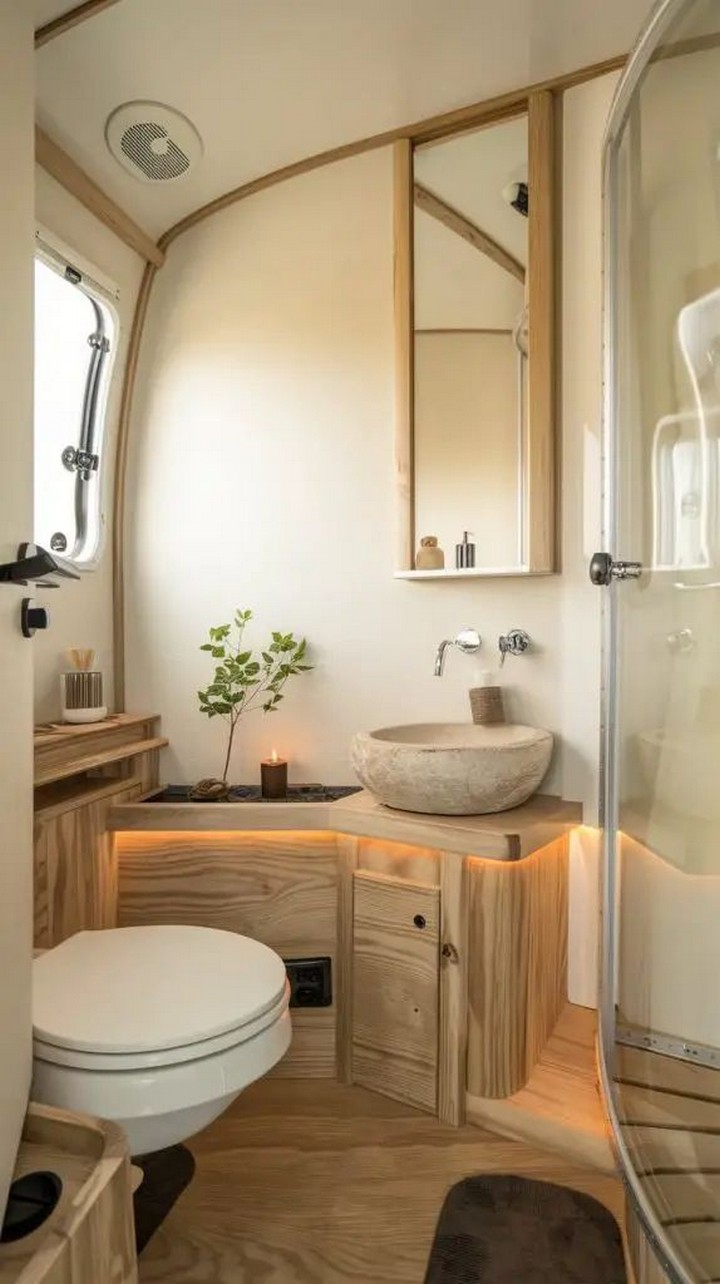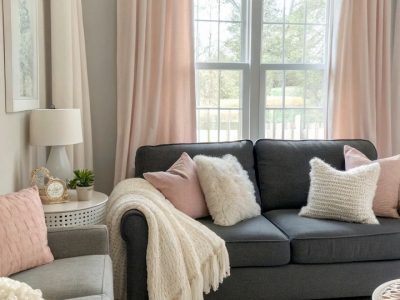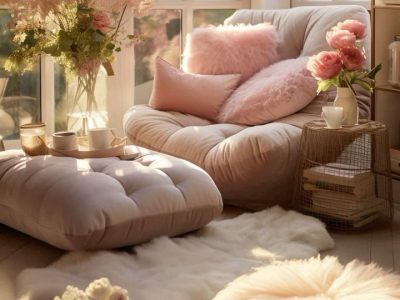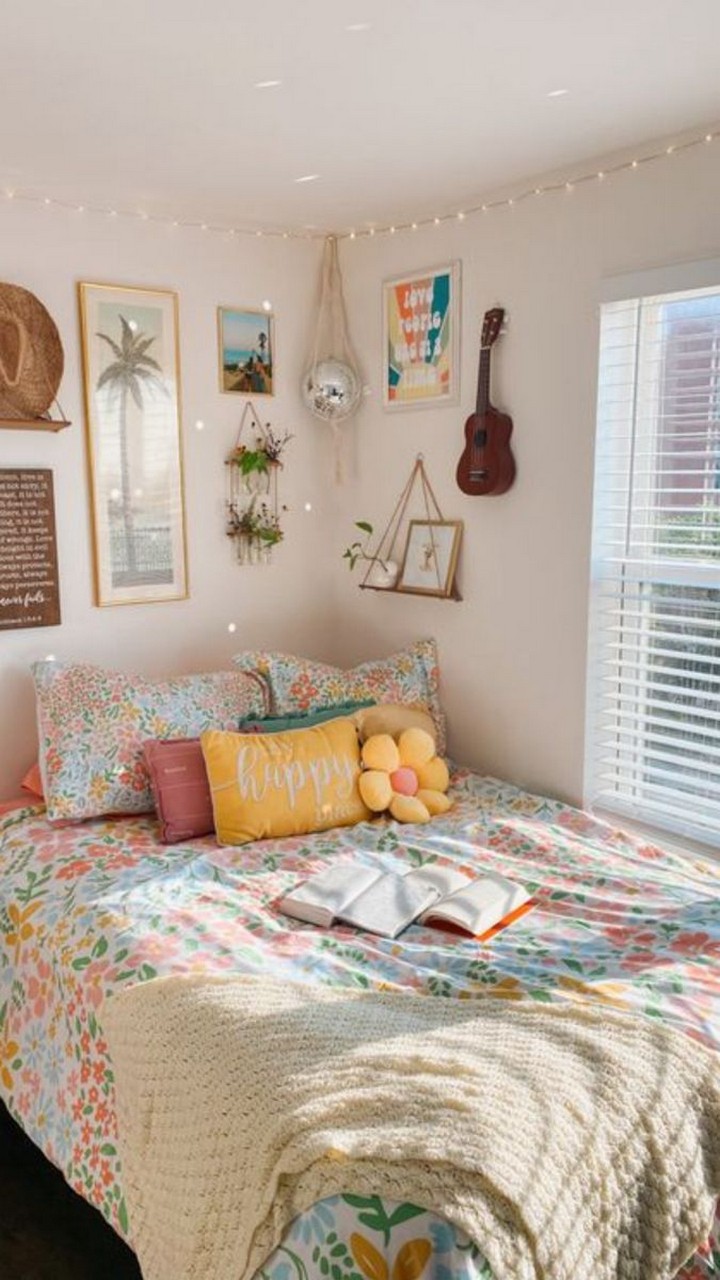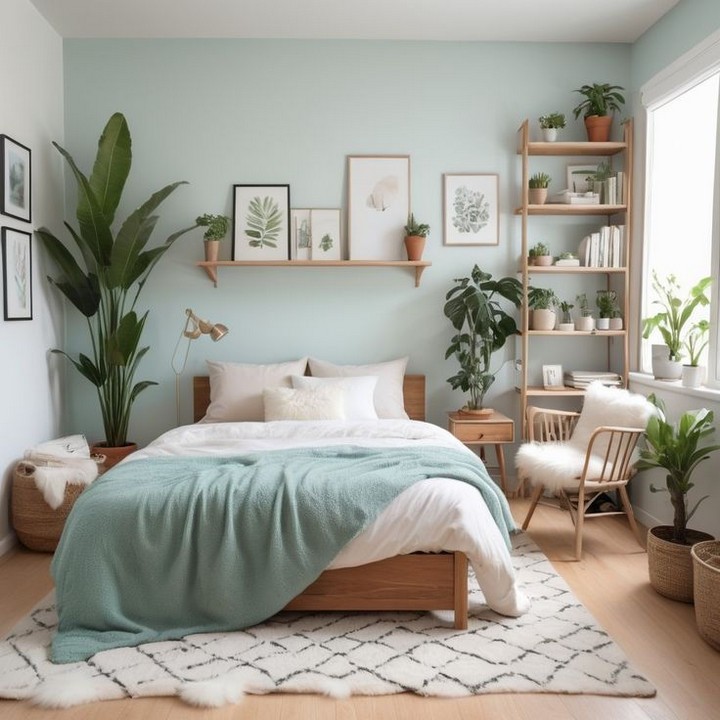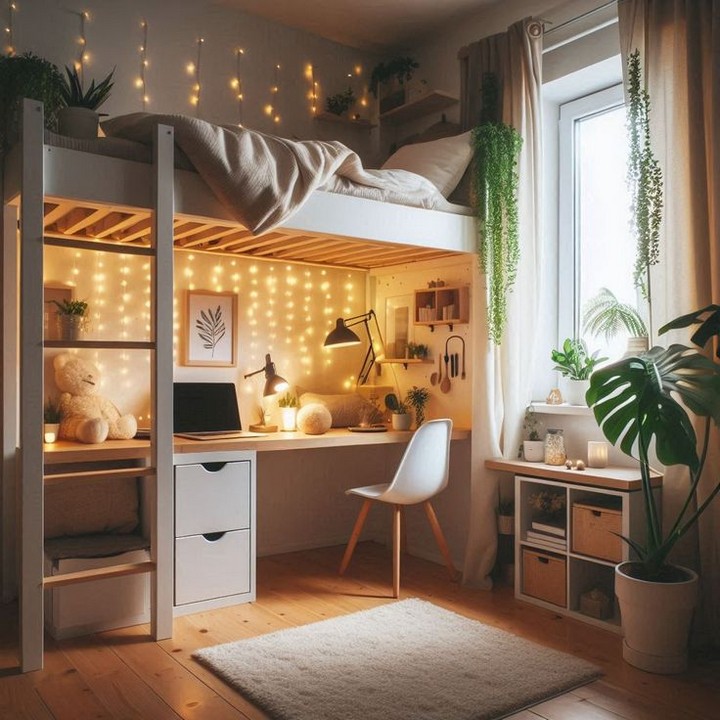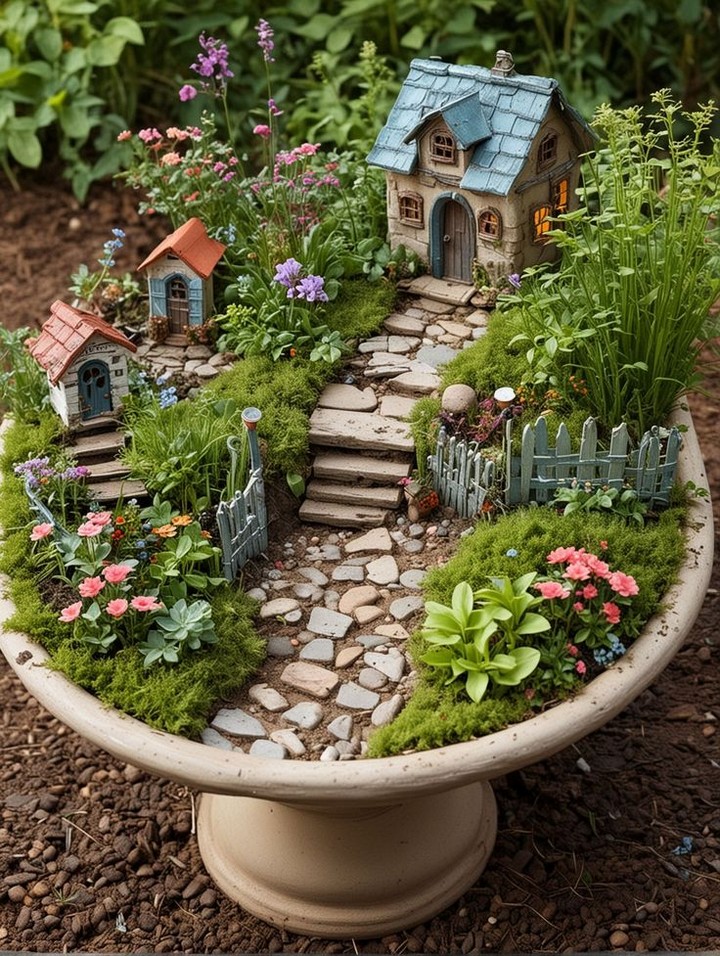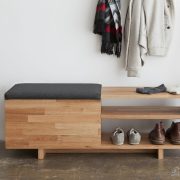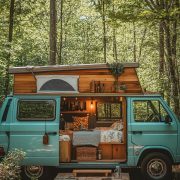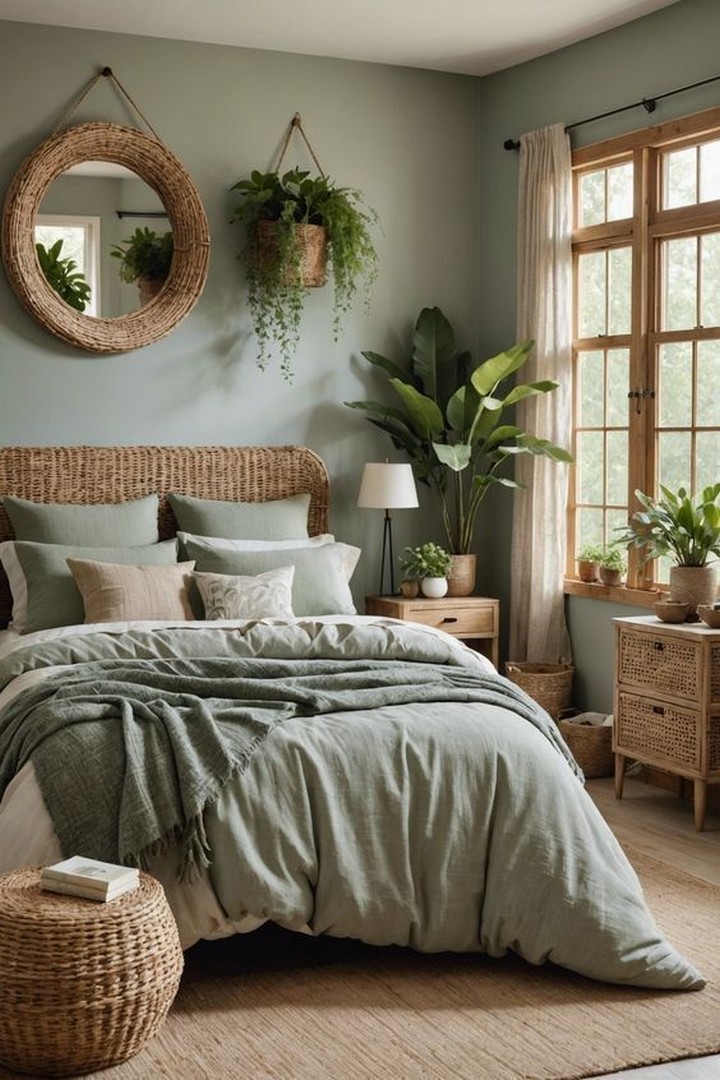There’s something inherently magical about a Scandinavian cabin bedroom a space where rustic charm meets minimalist elegance, where nature is celebrated rather than excluded, and where comfort reigns supreme despite the simplicity of design. This distinctive aesthetic captures the essence of hygge (Danish for coziness) and friluftsliv (Norwegian for open-air living), creating spaces that feel both grounding and uplifting.
Scandinavian cabin bedrooms have gained immense popularity beyond the Nordic regions, appealing to those seeking to create peaceful retreats away from the chaos of modern life. Whether you own a mountain cabin, a lakeside cottage, or simply want to transform your suburban bedroom into a Nordic-inspired sanctuary, these 24 ideas will guide you toward creating a space that embodies the serene, nature-connected essence of Scandinavian design.
1. Exposed Timber Walls
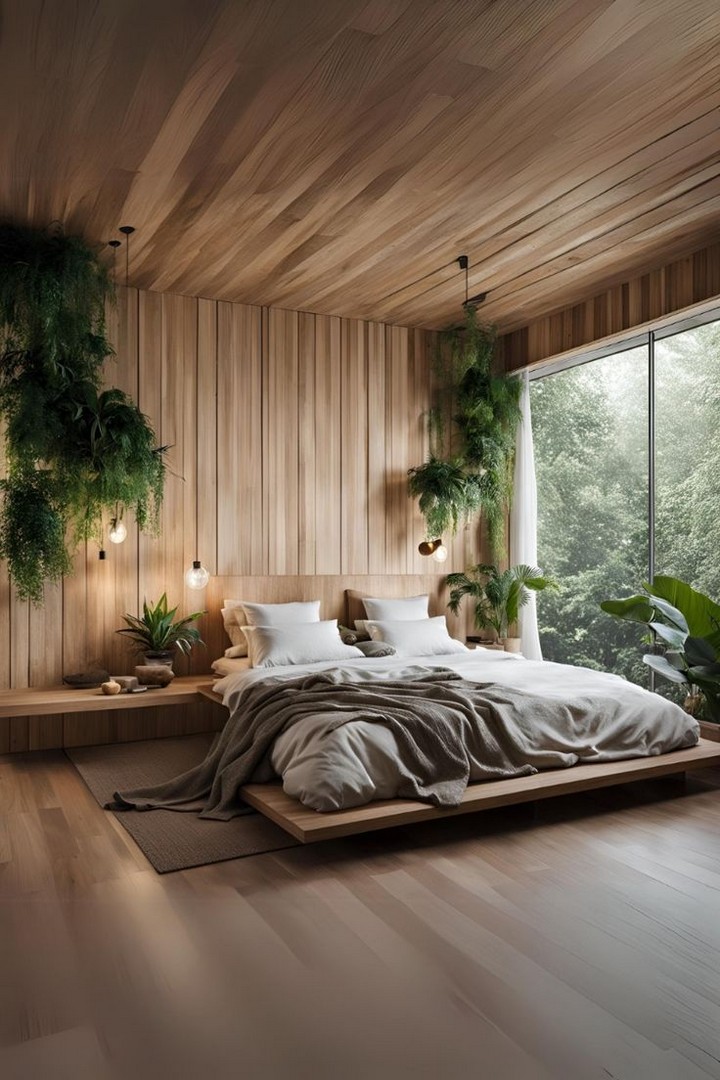
Embrace the authentic cabin feel with exposed wood walls in your bedroom. Traditional Scandinavian cabins (or “hytte” in Norwegian) feature walls made from local timber species like pine, spruce, or birch. These can be left in their natural state, whitewashed for a brighter appearance, or treated with natural oils to enhance the wood grain.
Unlike the dark, heavy log cabin aesthetic popular in some regions, Scandinavian timber walls tend to feature lighter woods and more refined finishes. Consider plank walls with visible joints rather than logs for a cleaner, more contemporary look that still honors traditional craftsmanship.
For existing cabins with darker wood, a light whitewash treatment can dramatically transform the space while preserving the texture and character of the original material.
2. Natural Fiber Textiles
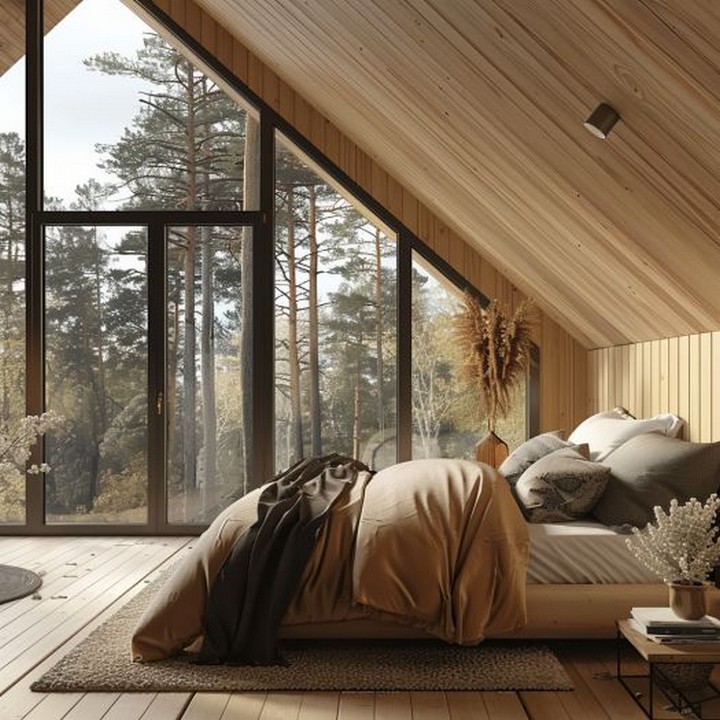
Layer your bedroom with textiles made from natural materials linen sheets, wool blankets, cotton throws, and sheepskin rugs. These materials not only look beautiful but serve the practical function of providing warmth and comfort in what were traditionally unheated or minimally heated spaces.
Look for undyed or naturally dyed fabrics in neutral tones like oatmeal, soft gray, and natural white. Handwoven textiles with subtle patterns add visual interest while maintaining the clean simplicity characteristic of Nordic design.
Traditional Nordic textiles often feature simple geometric patterns or folkloric designs. Incorporating a few authentic pieces, like a hand-loomed Swedish rag rug or Norwegian wool blanket, adds cultural depth to your space while supporting traditional crafts.
3. Stone Elements

Introduce the stability and permanence of stone into your cabin bedroom design. In traditional Scandinavian cabins, stone elements often appear as fireplaces or hearths, providing essential warmth during cold seasons.
For a contemporary interpretation, consider a stone accent wall, particularly behind the bed to create a natural headboard effect. Alternatively, smaller stone elements like bedside table lamps with stone bases or decorative stone bowls can introduce this grounding material without major construction.
Choose stones with muted, natural coloration rather than highly polished or vivid varieties. Slate, limestone, or local fieldstone all work beautifully within the Scandinavian aesthetic.
4. Handcrafted Wooden Furniture
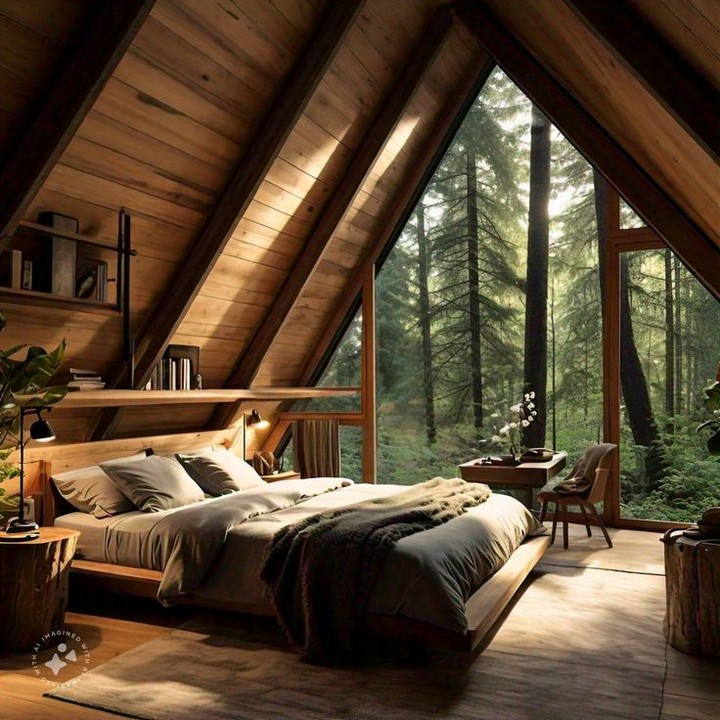
Select bedroom furniture crafted from solid wood with clean lines and functional design. Traditional Scandinavian cabin furniture combines rustic elements with thoughtful craftsmanship think sturdy bed frames with simple headboards, straightforward side tables, and practical storage pieces.
Look for items made from light-colored woods like pine, birch, or ash, which are abundant in Nordic forests and feature prominently in their design tradition. Avoid overly ornate details or dark stains, opting instead for natural finishes that highlight the wood’s inherent beauty.
The beauty of wooden furniture in a cabin setting is that it develops character over time, with each mark and patina telling a story of use and enjoyment aligning perfectly with the Scandinavian value of longevity and sustainability.
5. Tactile Contrast Through Leather
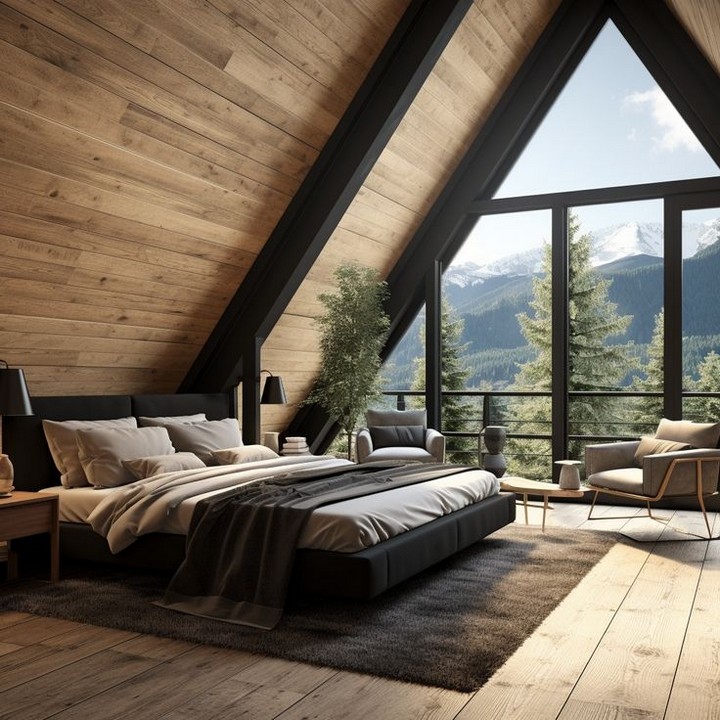
Introduce small leather elements to create textural contrast against softer textiles and wooden surfaces. Leather ages beautifully and adds warmth and sophistication to the rustic cabin setting.
Consider a leather headboard, bench at the foot of the bed, or reading chair. Even smaller elements like leather drawer pulls, picture frames, or storage baskets can introduce this material thoughtfully.
Choose natural, vegetable-tanned leathers that will develop a rich patina over time rather than heavily treated or synthetic varieties. Colors like cognac, natural tan, or soft black complement the typical Scandinavian palette while adding depth.
6. Basketry and Woven Elements
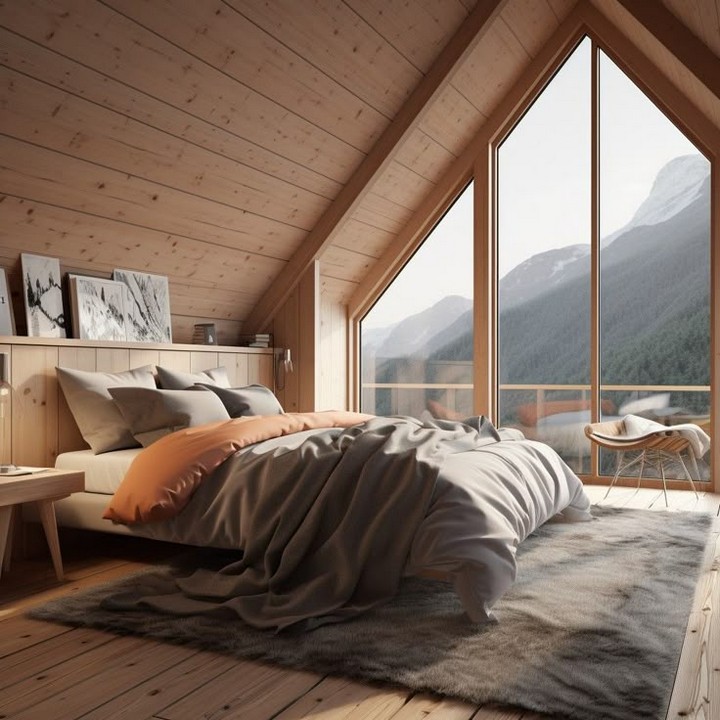
Incorporate handwoven baskets and objects that add visual texture while serving practical purposes. Traditional Scandinavian crafts include various basketry techniques using materials like birch bark, pine needles, and willow.
Use these pieces for storage (holding extra blankets, books, or clothing), as wall decorations, or even as alternative lighting fixtures with a basket serving as a lampshade. Their natural, imperfect textures add warmth and handcrafted character to the clean lines predominant in Nordic design.
Look for pieces with natural finishes rather than painted or artificially colored items, allowing the inherent beauty of the materials to shine through.
7. Predominantly White Palette
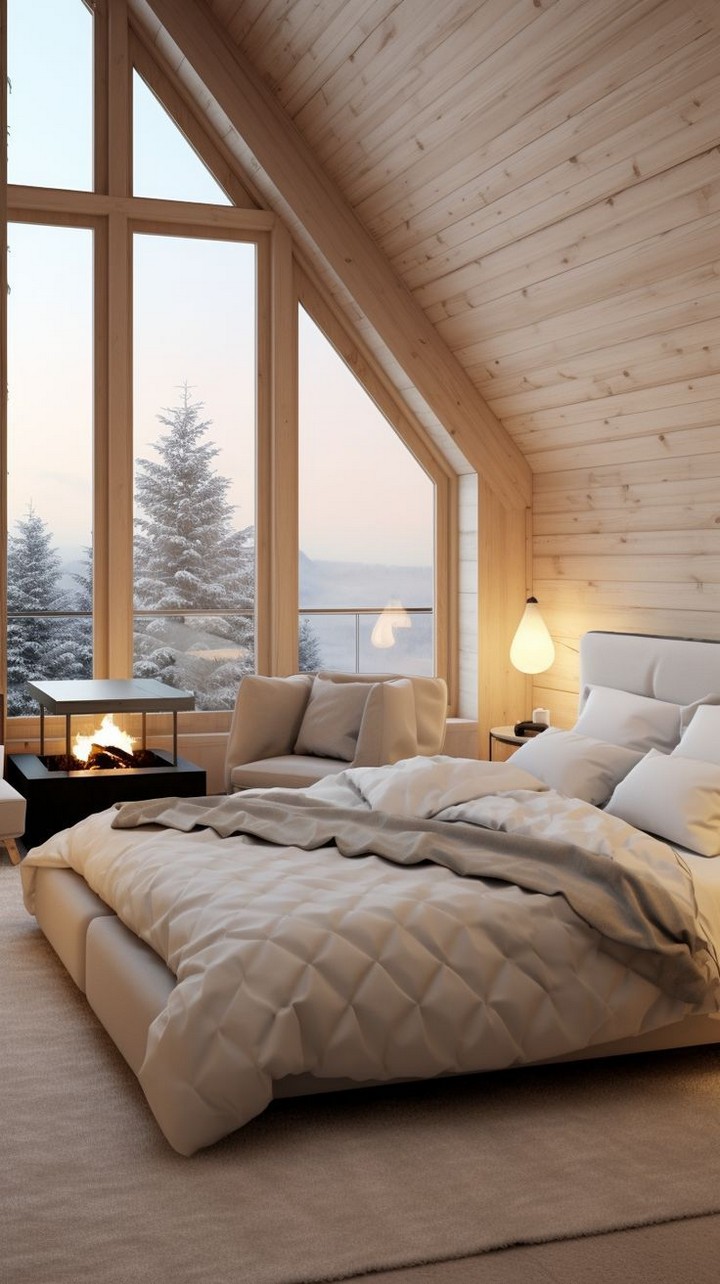
Embrace the classic Scandinavian preference for white walls, ceilings, and bedding. This isn’t merely an aesthetic choice it’s a practical response to long, dark Nordic winters, as white surfaces reflect and maximize the limited natural light available.
In a cabin bedroom, white creates a beautiful contrast with natural wood elements while visually expanding the space. Rather than flat, cold white, look for warmer shades with subtle undertones that soften the effect creamy whites, off-whites, or whites with the faintest hint of gray.
White bedding creates a hotel-like feeling of cleanliness and luxury, particularly inviting after a day of outdoor activities. Layer white-on-white with different textures (crisp cotton sheets, nubby linen duvet covers, chunky knit throws) to create depth within the monochromatic scheme.
8. Muted Natural Color Accents

While maintaining a predominantly neutral base, introduce carefully chosen color accents inspired by the Nordic landscape. Think soft blues reminiscent of Scandinavian skies, gentle greens echoing forest foliage, stony grays, and the warm terracotta of traditional Swedish cottages.
Unlike brighter color schemes, these nature-derived hues create a soothing, harmonious environment that supports rest and relaxation. Introduce these colors through smaller elements like pillows, throws, or artwork rather than large furniture pieces to maintain the tranquil neutral foundation.
The key is restraint select just two or three complementary accent colors rather than creating a rainbow effect that would disrupt the peaceful atmosphere.
9. Strategic Mirror Placement
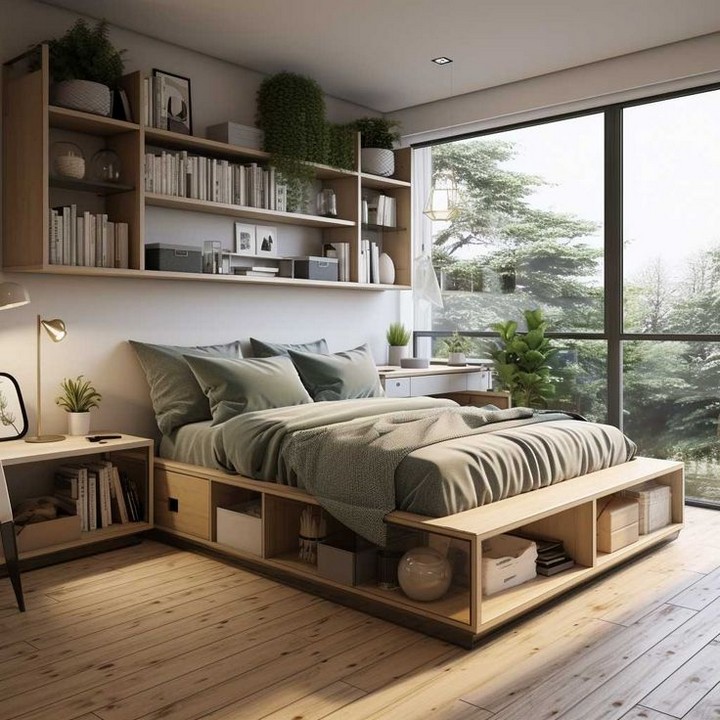
Amplify natural light with thoughtfully positioned mirrors that reflect both daylight and evening lamplight. In cabin settings where windows might be limited or small due to heat conservation concerns, mirrors become essential tools for light management.
Position a large mirror opposite a window to double the incoming natural light, or create a gallery of smaller mirrors on a shadowy wall to brighten the space. Consider mirrors with simple wooden frames that complement other wooden elements in your room.
Beyond their practical light-enhancing function, mirrors also visually expand the typically modest dimensions of cabin bedrooms, creating a greater sense of spaciousness without structural changes.
10. Layered Lighting Solutions

Create a flexible lighting scheme that adapts to different seasons and needs. Traditional Scandinavian cabins relied heavily on firelight and candles during dark winters, and this layered approach to lighting continues in contemporary design.
Include a combination of:
- Ambient lighting through simple ceiling fixtures or recessed lights
- Task lighting with focused reading lamps by the bed
- Accent lighting that highlights architectural features
- Atmospheric lighting through candles or small decorative lamps
Choose fixtures with clean, simple designs in natural materials like wood, glass, or brushed metal. For a truly authentic touch, incorporate traditional Scandinavian lighting elements like simple pendant lights with exposed bulbs or hurricane lamps that reference historical lighting methods.
11. Window Treatments That Welcome Nature
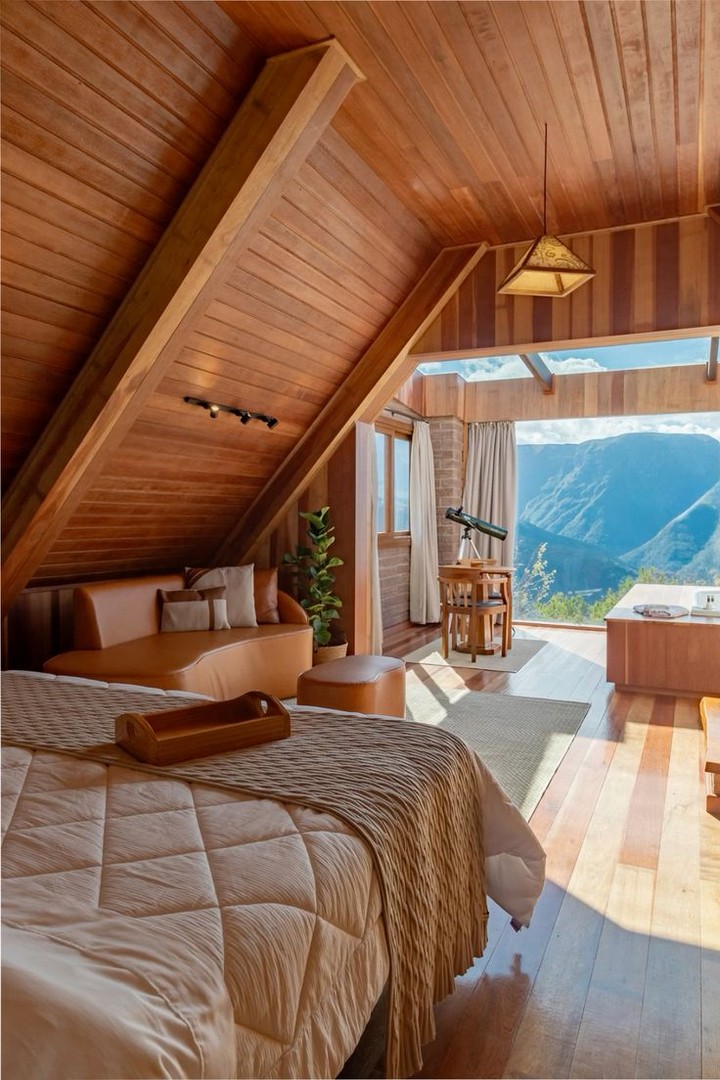
Rather than blocking views with heavy curtains, choose window treatments that frame the landscape while providing privacy when needed. Simple linen panels, roman blinds in natural fabrics, or wooden shutters all work beautifully in Scandinavian cabin settings.
During daytime hours, keep windows completely uncovered to maximize natural light and views. For nighttime privacy or summer’s extended daylight hours, opt for treatments that filter rather than block light completely.
If your cabin is in a remote location without privacy concerns, consider foregoing window coverings entirely for bedside and accent windows, embracing the Scandinavian philosophy of living in harmony with nature rather than separated from it.
12. Candlelight Integration
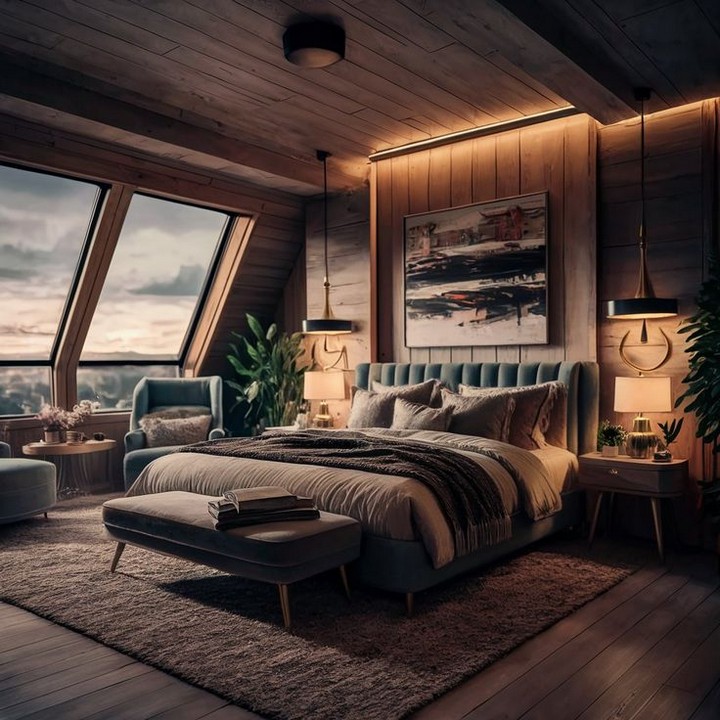
Embrace the Nordic tradition of using candles to create warm, inviting atmospheres, particularly during dark winter months. The Danish concept of hygge heavily features candlelight as essential to creating cozy ambiance.
Incorporate candles through:
- Wall-mounted sconces with candle cups
- Simple wooden or metal candlesticks on bedside tables
- Lanterns for both indoor use and porches
- Groupings of pillar candles at varying heights
For safety in a wooden cabin environment, consider high-quality flameless candles that mimic the warm flicker of real flames while eliminating fire risk. Place these on timers to automatically create a welcoming atmosphere as evening approaches.
13. Low-Profile Bed Frames

Choose a bed frame that sits closer to the floor, creating a grounded, protective feeling perfect for a cabin retreat. Traditional Scandinavian beds were often built this way for practical reasons lower beds are easier to keep warm in cool environments.
Look for simple platform designs in light wood with minimal ornamentation. Many authentic Scandinavian designs feature a slightly raised edge that helps keep bedding in place, a practical detail that eliminates the need for a footboard or elaborate side rails.
This lower profile also contributes to a sense of spaciousness in modest-sized rooms by reducing the visual weight of what is typically the largest piece of furniture in a bedroom.
14. Built-In Storage Solutions

Maximize space efficiency with built-in storage that eliminates the need for numerous furniture pieces. Traditional cabins often featured cleverly designed built-ins that made use of every available inch while maintaining a clean, uncluttered appearance.
Consider:
- Under-bed drawers for extra linens and seasonal clothing
- Headboards with integrated shelving for books and small necessities
- Window seats with storage compartments beneath
- Custom niches built into knee walls or awkward corners
These built-in elements should be constructed from the same wood as other architectural features for a seamless look that doesn’t fragment the visual space.
15. Multifunctional Furniture Pieces
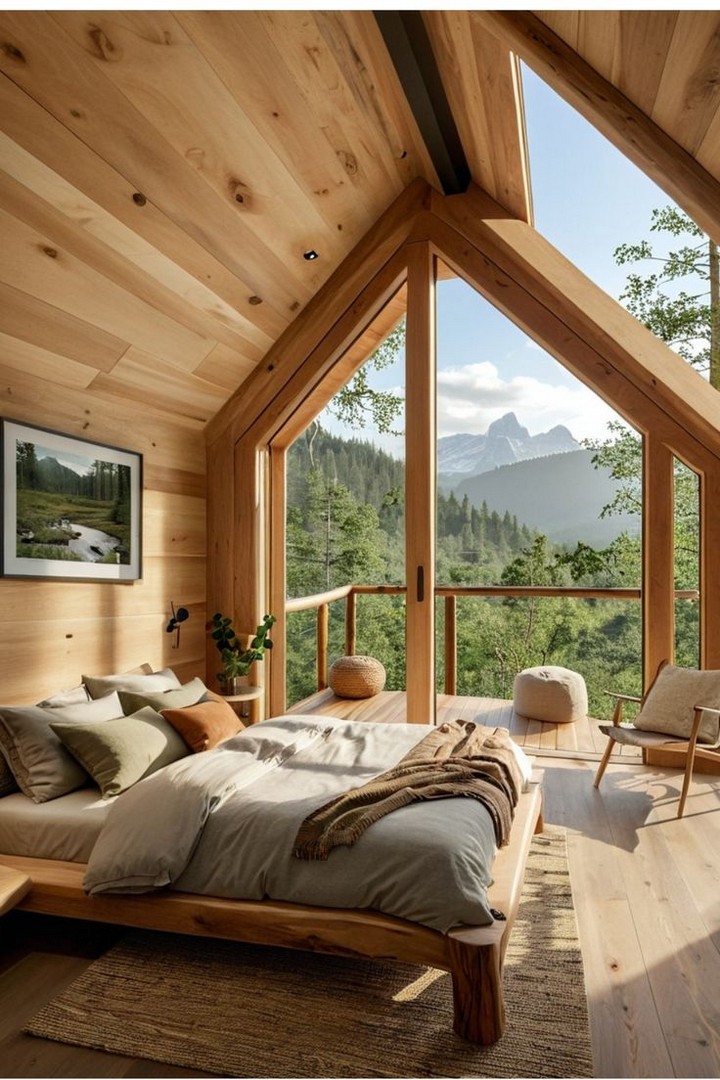
Select furniture that serves multiple purposes to maximize functionality without crowding the space. This approach aligns perfectly with the Scandinavian principles of practicality and efficient use of resources.
Consider pieces like:
- A bench at the foot of the bed that provides seating and storage
- Nesting tables that can be expanded when needed and tucked away when not
- A desk that doubles as a vanity or bedside table
- Storage ottomans that offer both seating and space for extra blankets
The key is choosing pieces with clean, simple designs rather than obviously “convertible” furniture that tends to look utilitarian rather than aesthetically pleasing.
16. Reading Nook Creation
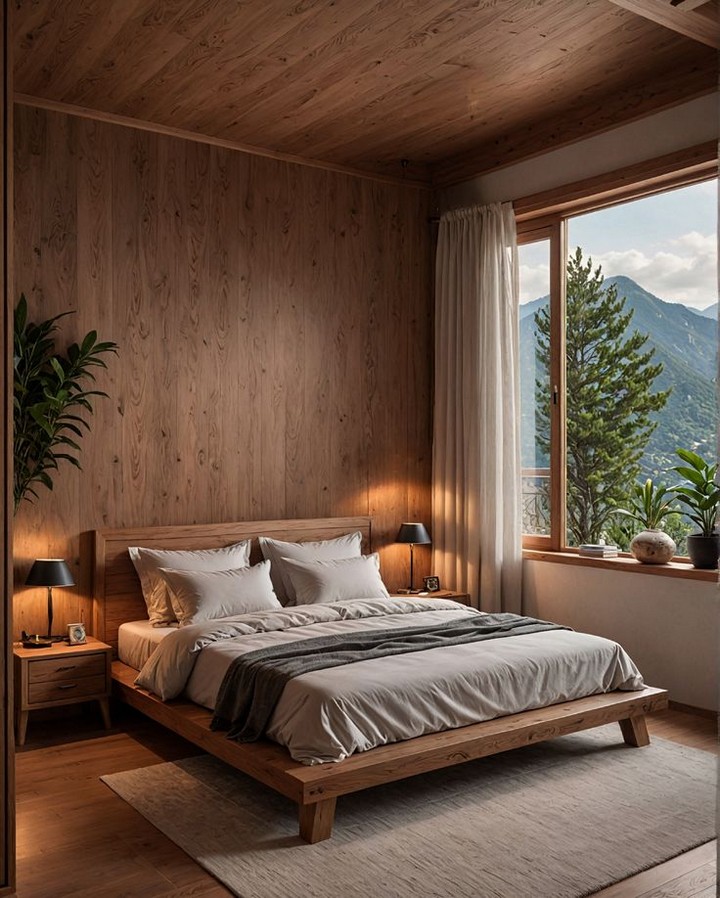
Carve out a dedicated spot for quiet contemplation and reading—activities highly valued in Scandinavian culture, particularly during long winter months. Even in a modest cabin bedroom, a thoughtfully designed reading corner creates a retreat within a retreat.
Position a comfortable chair near a window to maximize natural light during daylight hours, paired with a simple floor lamp for evening reading. Add a small side table for books and a warm throw blanket to create an inviting spot for relaxation.
This dedicated space for slow, mindful activities embodies the Scandinavian appreciation for simple pleasures and moments of peaceful solitude amidst busy lives.
17. Open Shelving Display
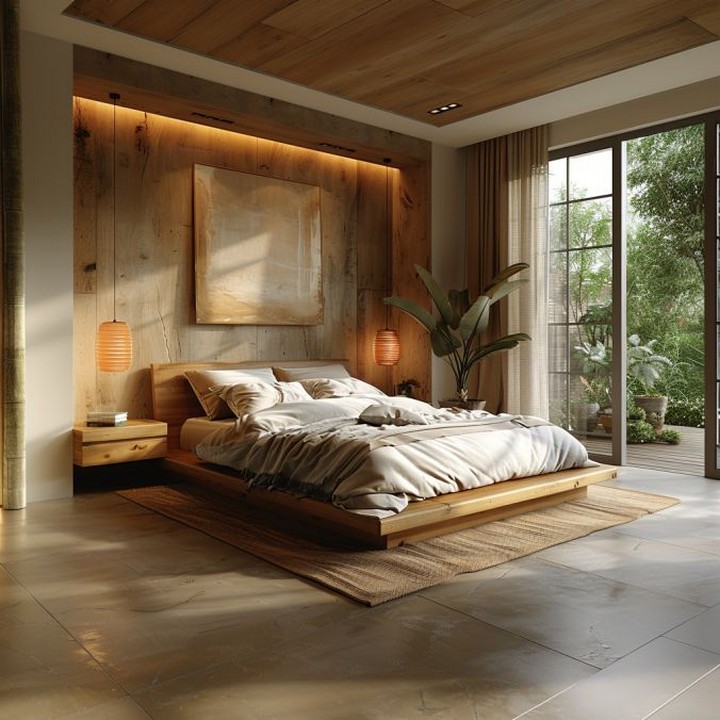
Replace closed storage with simple open shelving for a lighter visual impact while creating space to display meaningful objects. Traditional Scandinavian cabins often featured open plate racks and shelving rather than extensive cabinetry.
In the bedroom context, floating wooden shelves can hold books, lighting, and a few carefully chosen decorative elements. The key is restraint—these shelves should be thoughtfully arranged with negative space between items rather than packed full.
This approach encourages mindful curation of possessions, displaying only items that have both beauty and meaning—a cornerstone of Scandinavian design philosophy.
18. Bench Under Windows

Utilize the space beneath windows with a simple bench that creates both seating and a display surface. This traditional Scandinavian feature transforms an often underused area into a functional element that enhances the room’s flow.
A bench provides a place to sit while dressing, a spot to place clothes when changing, or simply a moment to pause and look outward at the surrounding landscape. Top the bench with a cushion in a textural natural fabric for comfort, adding a few cushions for back support.
In smaller cabins, this bench can also serve as seating for a compact table, creating an in-room breakfast nook that allows you to enjoy morning coffee with a view.
19. Botanical Connections
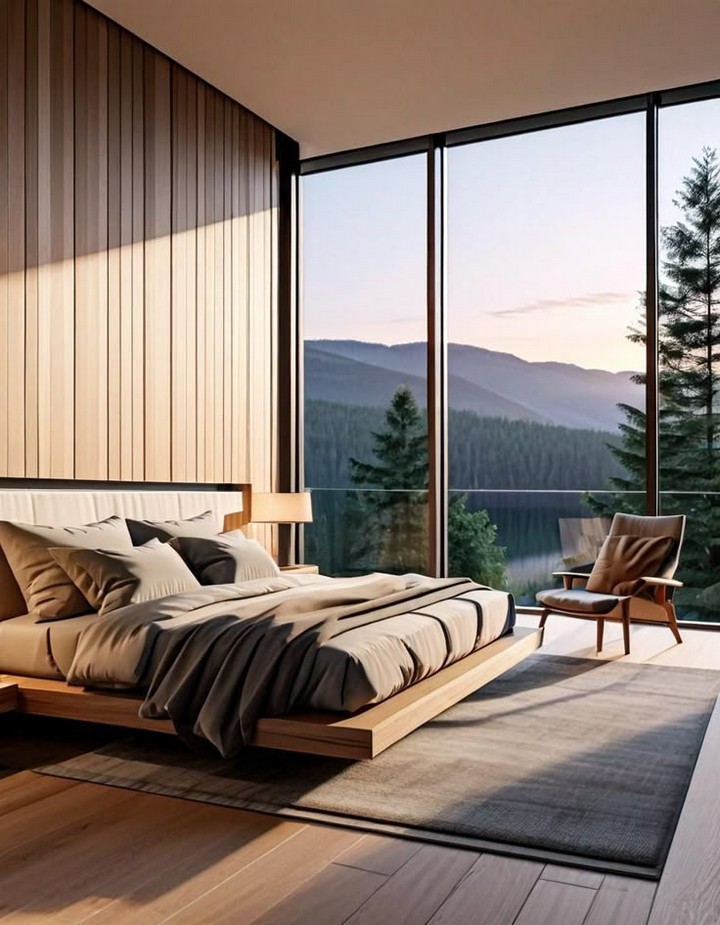
Bring the outside in with thoughtful botanical elements that reinforce the connection to nature central to Scandinavian design. Unlike more elaborate floral traditions, the Nordic approach to plants is understated and often seasonal.
Consider:
- Simple arrangements of foraged branches, grasses, or wildflowers in ceramic or glass vessels
- Potted native plants that thrive in indirect light
- Dried botanical elements like seedpods or grasses for winter decoration
- Evergreen sprigs during winter months for both decoration and subtle fragrance
Choose vessels with simple forms in natural materials—handmade pottery, wooden containers, or clear glass—that complement rather than compete with the botanical elements themselves.
20. Mindful Art Selection
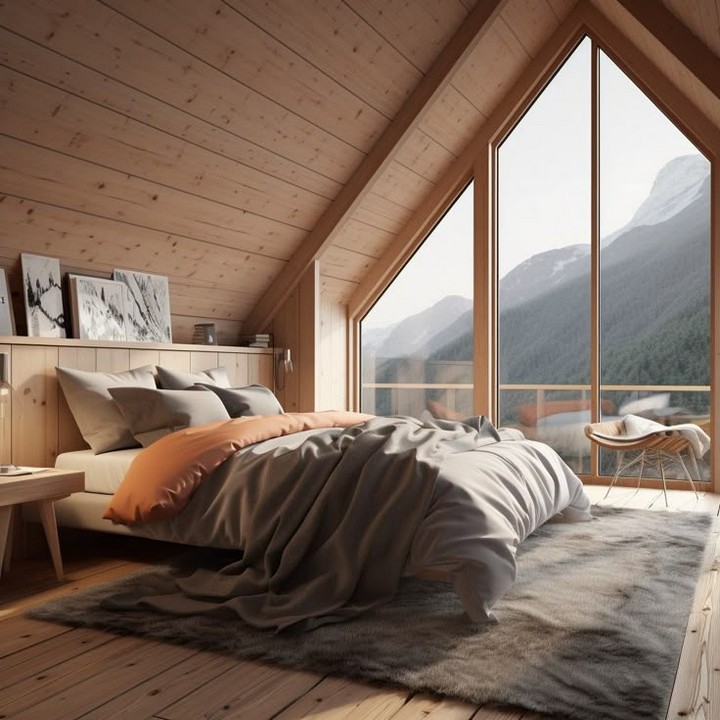
Choose artwork that reflects the serene, nature-connected atmosphere of a Scandinavian cabin. Traditional options include botanical prints, landscape photography focusing on Nordic scenery, or simple line drawings of natural subjects.
Mount art in simple frames that don’t detract from the images themselves natural wood, thin metal, or clean white frames all work well within this aesthetic. Consider creating asymmetrical groupings rather than perfect grids for a more relaxed, evolved feeling.
For a more contemporary take, abstract landscape-inspired art with a limited color palette creates a modern yet nature-connected focal point perfectly suited to the Scandinavian cabin bedroom.
21. Minimal Pattern Play
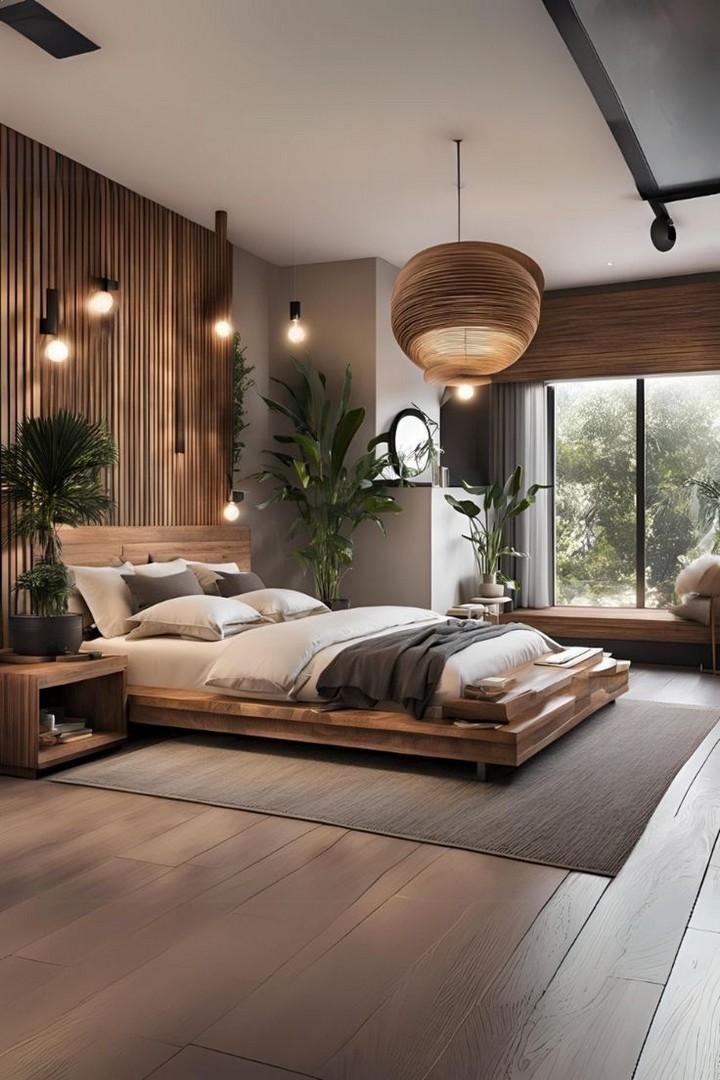
Introduce pattern sparingly through textiles and smaller elements rather than overwhelming the peaceful space. Traditional Scandinavian patterns include simple geometrics, subtle stripes, and stylized natural motifs always executed with restraint.
Limit patterns to a few key pieces perhaps a geometric throw at the foot of the bed, subtly patterned pillowcases, or a traditional Nordic woven rug. Allow these pieces to stand out against the predominantly solid backdrop of white walls and natural wood.
When using pattern, stick to the established color palette of neutrals with perhaps one or two nature-inspired accent hues to maintain the cohesive, calming atmosphere.
22. Meaningful Natural Objects
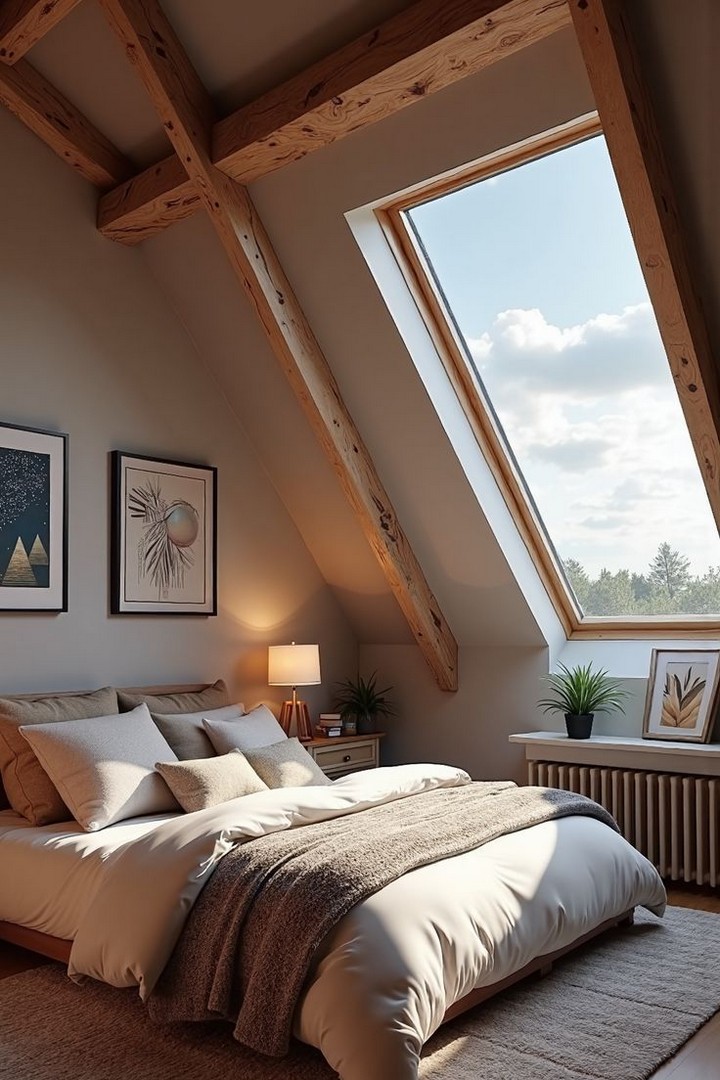
Display thoughtfully chosen natural objects that tell a story or hold special meaning. This approach aligns perfectly with the Scandinavian tradition of decorating with found objects from nature walks and outdoor adventures.
Consider collections of smooth stones from a favorite beach, interestingly shaped driftwood, or pinecones gathered during forest walks. Display these items simply—in a wooden bowl, arranged on a shelf, or under a glass cloche for protection.
These personal elements transform generic design into something uniquely yours while maintaining the nature-connected essence of authentic Scandinavian cabin style.
23. Traditional Handicrafts
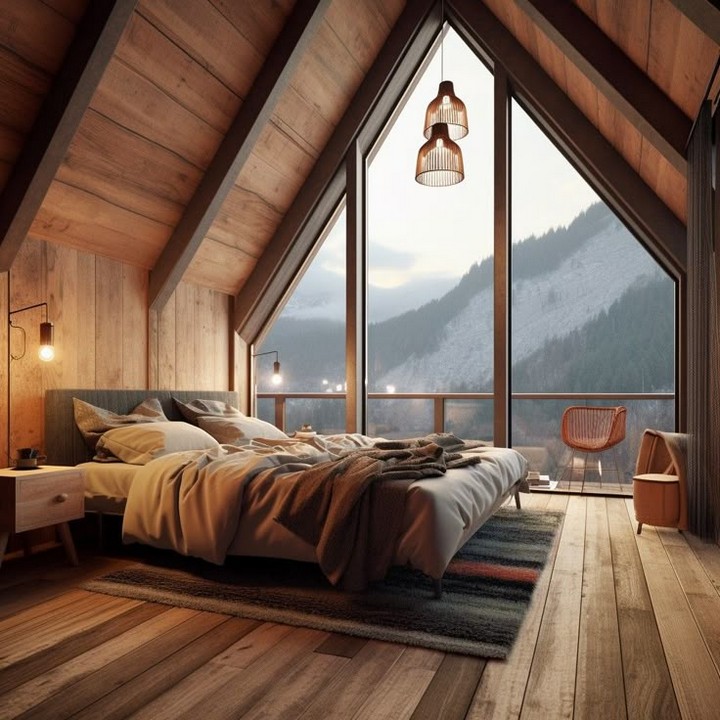
Incorporate examples of traditional Nordic handicrafts that add cultural authenticity and handmade character to your space. Scandinavian countries have rich craft traditions that continue to influence contemporary design.
Look for items like:
- Hand-carved wooden spoons or small sculptures
- Traditional textiles like Swedish woven table runners or Norwegian wool blankets
- Simple ceramic pieces with characteristic Nordic glazes
- Handmade paper ornaments or mobiles
These items add depth and cultural context to your design while supporting traditional craftsmanship—a value deeply embedded in Scandinavian culture.
24. Subtle Seasonal Adjustments
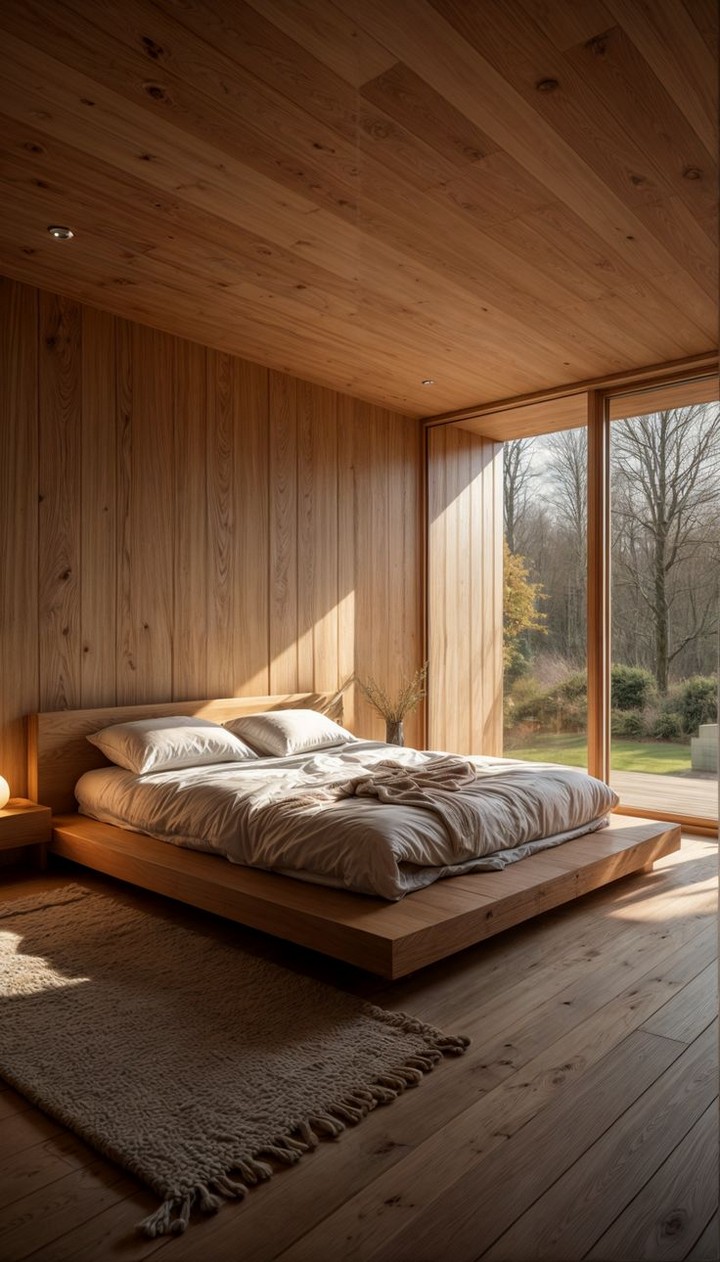
Embrace the Scandinavian practice of making subtle seasonal changes to bedroom decor that reflect the natural world outside. This practice keeps your space feeling fresh and connected to nature’s rhythms.
In winter, add layers of warm textiles, incorporate evergreen elements, and increase the presence of candles and warm lighting. During summer, lighten the space with fewer layers, brighter botanicals, and perhaps rotating artwork to reflect the changed landscape.
This practice of seasonal adjustment connects to the profound Scandinavian understanding of nature’s cycles and the different needs we have throughout the year for coziness and light in winter, for freshness and simplicity in summer.
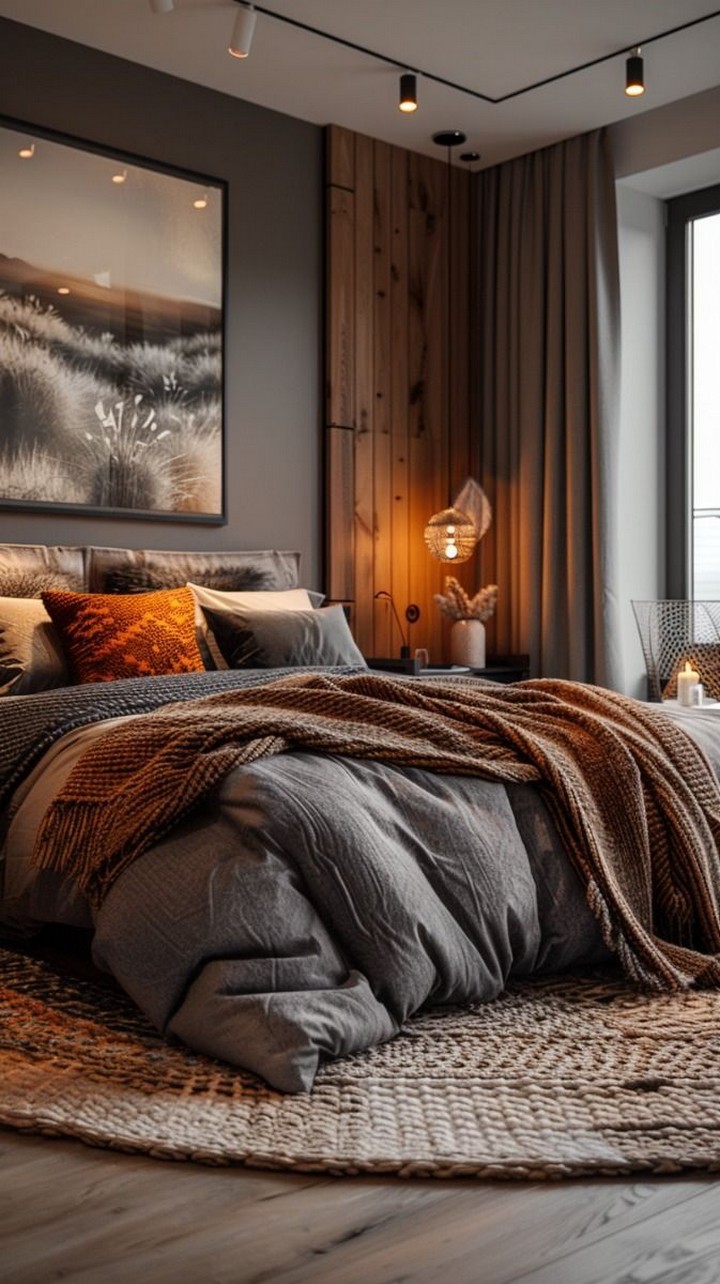
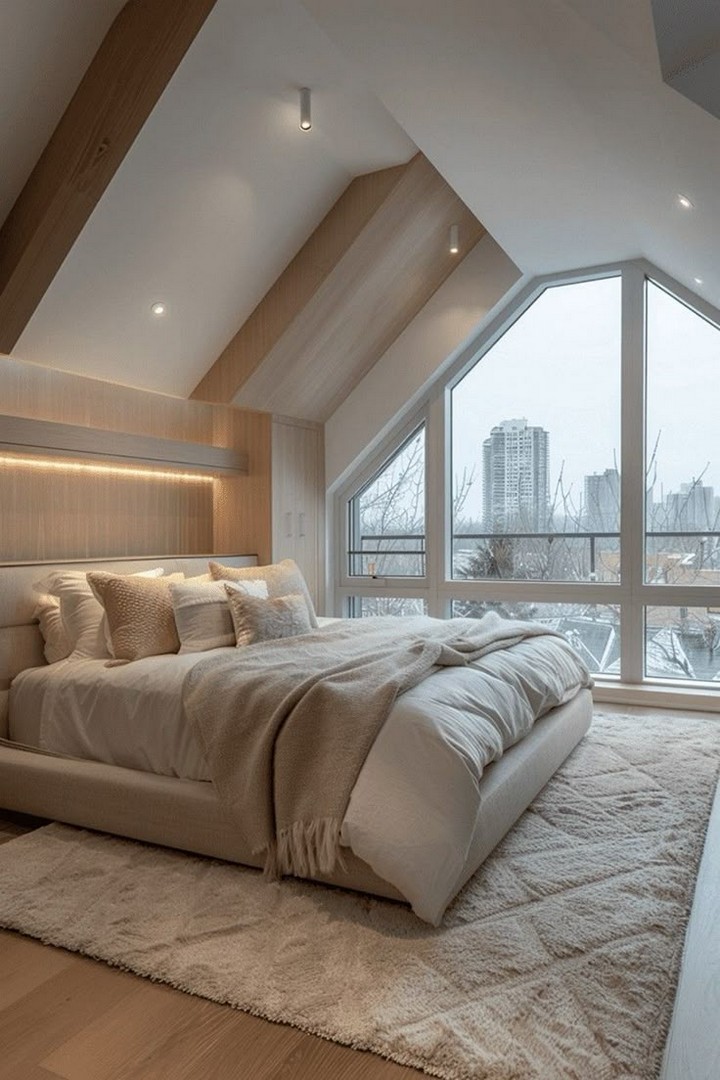
Have you implemented any of these Scandinavian cabin bedroom ideas in your own space? We’d love to see your interpretations and hear how these design principles have transformed your sleeping environment.
For more inspiration on nature-connected interior design, Nordic living philosophies, or cabin renovation ideas, explore our related articles or sign up for our monthly newsletter featuring seasonal decorating guidance and interviews with Scandinavian design experts.
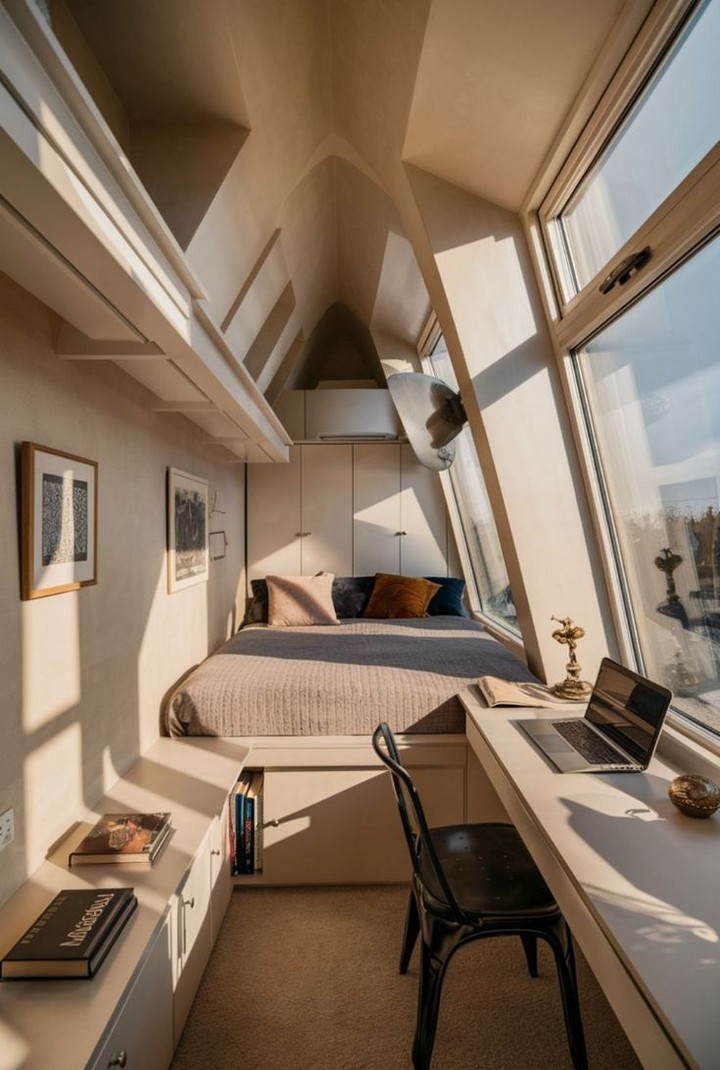
Remember that creating a space that truly nurtures rest and renewal is one of the most worthwhile investments you can make in your wellbeing. The Scandinavian cabin bedroom, with its emphasis on natural materials, thoughtful simplicity, and connection to the outdoors, offers a blueprint for creating just such a sanctuary whether in an actual woodland cabin or simply a corner of your everyday home dedicated to peace and restoration.

